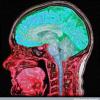For those who are curious, I have collected all the studies of Nebracetam and I have copied and pasted their results.
Nebracetam was first synthesized in Germany, probably around the year 1988. It has stronger general effects than Piracetam but weaker central cholinergics effects than those of directly acting cholinergics agents. No side effects are observed.
[1]RESULTS SUMMARY:
Nebracetam increases the noradrenaline and dopamine and turnover in the forebrain and brain stem. Nebracetam act as an antidepressant suggested that this action is--at least partly--mediated by the central noradrenaline system.
[2]Nebracetam increases alpha-wave mainly in the frontal area at high frequency (above 9.5 Hz) and an associated decrease of slow-wave and of fast-wave. This suggests that Nebracetam might activate linguistic learning and memory process in normal subjects.
[3]Nebracetam has a tyramine-like, catecholamine releasing property. Although a large dose of Nebracetam has a direct cardiac depressant action, it does not affect muscarinic mechanisms in the heart.
[4]The affinity order of Nebracetam was: M1-muscarinic (m) ACh receptor greater than M2-mACh receptor greater than alpha 2-adrenoceptor greater than beta-adrenoceptor greater than alpha 1-adrenoceptor greater than nicotinic ACh receptor. Nebracetam seems to act on M1-mACh receptors, and its long-term administration probably induces the down-regulation of mACh receptors, mainly M1-mACh receptors in the hippocampus and striatum and M2-mACh receptors in the cerebellum.
[5]Nebracetam significantly protected and reduce the rate of neuronal loss against impairment of the striatal responses under the conditions of hypoglycemia. Nebracetam exert neuroprotective actions against hypoglycemic/hypoxic brain injury by activating energy metabolism.
[6]Nebracetam has a beneficial effect on memory that has been impaired by scopolamine or by cerebral ischemia.
[7]Nebracetam induced a rise of [Ca2+]i in the medium with 1 mM Ca2+ and without Ca2+ (plus 1 mM EGTA). Nebracetam seems to act as an agonist for human M1-muscarinic receptors.
[8]Nebracetam facilitates the ganglionic muscarinic transmission through acting on presynaptic sites.
[9]Nebracetam may have protective actions on the destruction of hippocampal cholingergic neurons as well as memory impairment induced by AF64A administration.
[10]The cognitive enhancing effect of nebracetam involves not only cholinergic mechanisms but also involves lymbic and hippocampal noradrenergic mechanisms.
[11]Nebracetam exert neuroprotective actions against not only ischemia but also glutamate toxicity.
[12]Nebracetam (10(-5) and 10(-4) M) completely protected against striatal dopaminergic impairment induced by L-glutamate and NMDA, respectively. Therefore, nebracetam seems to produce a neuroprotective action by interacting, at least in part, with NMDA receptor-operated Ca2+ channels.
[13]It is suggested that the direct effects of nebracetam on nAChRs and mAChRS, which were induced only by a rather high concentration, as compared with the clinically expected plasma level, may be a contributing factor to the clinical effectiveness of the drug only if there is some critical change in the sensitivity to the drug.
[14]Of several neurotransmitter-related substances measured in the CSF, a marked rise of AChE activity was observed. It is suggested that the mechanisms of action of Nebracetam are based on its transit into the CSF as well as the activation of intracerebral acetylcholinergic systems.
[15]Nebracetam enhances acetylcholine release from presynaptic sites of dog stellate ganglia not by blocking presynaptic M2 muscarinic autoreceptors but by accelerating acetylcholine formation, and by increasing choline uptake when acetylcholine is depleted.
[16]In cultured cerebellar granule cells, nebracetam attenuates the external Ca2+ influx derived from the activation of N-methyl-D-aspartate receptor-gated rather than voltage-gated Ca2+ channels.
[17]Nebracetam protects against ischemic delayed neuronal cell death in the hippocampus.
[18]Nebracetam is a possible therapeutic agent for the restoration of cerebral energy metabolism against microsphere-induced, sustained cerebral ischemia.
[19]It is unlikely that Nebracetam at a pharmacologically effective dose alters dopamine or serotonin uptake in the brain nerve terminal under normal conditions.
[20]There are evidence for a possible action of nebracetam on 5-HT metabolism in the ischaemic brain.
[21]Cultured astrocytes treated with either nebracetam or piracetam showed decreased intracellular ATP and PCr levels. The addition of nebracetam and dBcAMP to cultures caused an increase of PCr content in astrocytes. The astrocytes treated with nebracetam showed a decrease in 3H-valine incorporation. Nootropic drugs change morphometric parameters (cell area, perimeter and form factor) of cultured astrocytes. It can be concluded that nootropics have differentiated influence on both the energetic metabolism and morphology of rat astrocytes in vitro.
[22]We can clearly see the lack of medical study in human (about two studies?). Futhermore, the study
[5] doesn't seem to be very positive for a long-term usage of Nebracetam.
Edited by Ichoose2live, 05 March 2011 - 02:25 AM.






















































